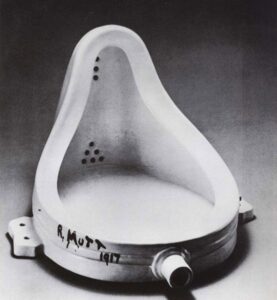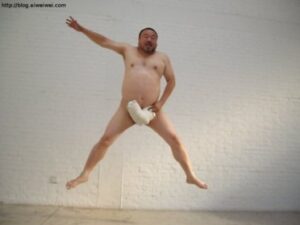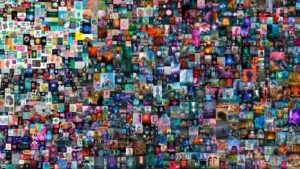The transformation of contemporary art concepts from urinals to the first 5,000 days

1.Introduction
Thinking question (1 min)
“If I place a toilet in an art museum, is it considered art? For example, look at the photo below.”

This is a classic question in contemporary art. In traditional views, art is understood as painting, sculpture, or handcrafted objects.
The object shown above is Marcel Duchamp’s Fountain (1917).
In 1917, French artist Marcel Duchamp purchased an ordinary men’s urinal from a hardware store, signed it with the pseudonym “R. Mutt,” and submitted it to an art exhibition in New York. This industrial ready-made object marked the beginning of contemporary art. Duchamp argued that art does not necessarily depend on the artist’s manual labor or visual beauty. Instead, the act of choosing an object and placing it in a new context could itself be an artistic gesture. By doing so, Duchamp challenged the authority of the Western art system. People began asking: Where does artistic value come from? From the physical object, or from the ideas behind it?
Fountain thus became a turning point in modern and contemporary art. Artistic thinking shifted from “What is the artwork?” to “Why is it presented this way?” Duchamp’s gesture opened the path to conceptual art, where art is not just a representation of the world but a form of critique, inquiry, and institutional reflection. From this moment on, artists were no longer only makers of objects—they became proposers of ideas and constructors of meaning.
2.Case Studies in Contemporary Art (10 mins)
In this section, we will look at several well-known contemporary artworks to experience the diversity and depth of contemporary art.
Case 1 (4 mins): Joseph Kosuth — One and Three Chairs (1965)
In this work, Joseph Kosuth presents three different forms of a “chair” in one space: a real chair, a photograph of the chair, and the dictionary definition of the word “chair.” The artist creates no new object; instead, he poses a crucial question: when we talk about a “chair,” are we referring to the physical object, its visual representation, or the abstract concept constructed through language?
This relates to philosophical discussions about representation and highlights that our understanding of the world is never direct—it always passes through forms of mediation.

One and Three Chairs is considered a classic example of conceptual art. It demonstrates how contemporary art shifted from focusing on material form to prioritizing ideas. For Kosuth, the essence of art lies not in aesthetic appearance but in the questions and concepts a work raises. The artwork is no longer an object for visual appreciation but a structure designed to provoke thought. In this way, Kosuth helped free art from traditional expectations of beauty and craftsmanship, pushing it into an era centered on concepts.
Case 2 (4 mins): Ai Weiwei — Grass Mud Horse Blocks the Center (2009)
Ai Weiwei’s works frequently address social and political issues and often critique Chinese authoritarianism, which has led to repeated suppression by the government. The title Grass Mud Horse Blocks the Center uses a well known Chinese internet pun,a coded phrase that satirically insults the Communist Party. The work reflects resistance against censorship and exposes the limits placed on public expression under an authoritarian system.

In this work, art is no longer simply art. It becomes a political gesture. Ai Weiwei uses his creations to ignite public discussion, compelling audiences to confront issues that are often avoided in society. Art here becomes a social language—one that questions power, expresses personal and collective positions, and encourages public thought. It does not aim for beauty, but instead emphasizes the force of expression itself. In this sense, art becomes part of the struggle for free speech and a form of resistance.
3.The Extreme of Dematerialization in Contemporary Art (5 mins)
Case 3: Beeple — Everydays: The First 5000 Days (2021)
American digital artist Beeple (Mike Winkelmann) created one digital image every day for 13 years, eventually combining 5,000 of them into a single massive digital artwork. The piece exists only as a digital file—there is no physical object—yet it sold for USD 69 million at Christie’s in 2021. This event shows that the value of art is no longer tied to a physical object but can rely on the idea of digital uniqueness provided by blockchain technology.

Blockchain records ownership of digital files, allowing digital artworks to be collected and traded like traditional art. Through this system, an artwork moves from a physical object to a unique data record. The meaning of collecting shifts from “owning a physical object” to “owning its digital identity.” Beeple’s work illustrates an extreme form of dematerialization in contemporary art.
4.Extension (5 mins)
QUESTION: Is the “artist” still important in the age of AI?
Today, AI can generate a beautiful image within seconds. So what is the role of the artist?
In contemporary art, the most important part of being an artist is not the hand but the mind. AI can produce images, but it does not know what to express or why to express it. The true artist is the one who poses the questions and decides what issues to challenge.
In the age of AI, we need artists even more—not to “make things,” but to help us think about the world.
you can use the website below to experiment how ai generate visualart
https://jaaz.app/template
promt that you can use: Deconstructivist composition, floating geometry, transparent layered structure, light cutting space, liquid form transformation, fractal growth texture, experimental image texture, dark futuristic atmosphere, cold technological tones, abstract energy flow, anti-gravity tension field.


